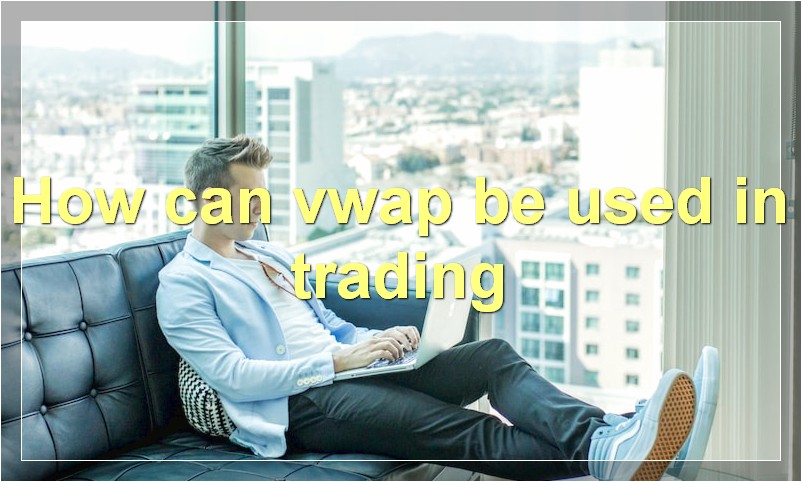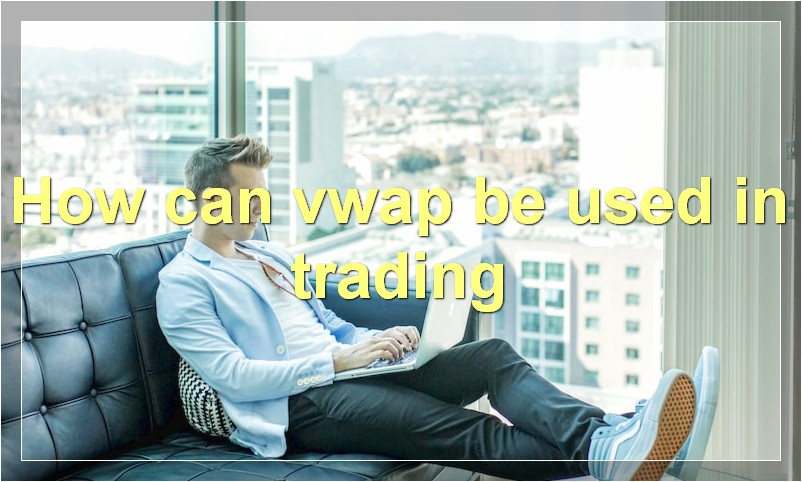If you want to know how to trade like a pro, then you need to understand the VWAP formula.
What is the vwap formula
The vwap formula is a mathematical formula used to calculate the volume weighted average price of a security. The vwap formula is used by traders to determine the best time to buy or sell a security. The vwap formula is also used by investors to measure the performance of a security.
How is vwap calculated

When it comes to trading stocks, one of the most important concepts to understand is volume weighted average price (VWAP). This is because VWAP can be used as a measure of the “fair value” of a stock, and it can also be used as a tool to help traders make decisions about when to buy and sell.
So how is VWAP calculated? Essentially, VWAP is the average price of a security traded during a period of time, weighted by the volume of each trade. To calculate VWAP, you simply add up the total dollar value of all trades made during the period in question, and then divide by the total number of shares traded.
For example, let’s say that ABC Corporation has a stock price of $10 per share. Over the course of one day, there are three different trades made:
– Trade 1: 100 shares at $10 per share ($1,000 total)
– Trade 2: 200 shares at $9 per share ($1,800 total)
– Trade 3: 300 shares at $11 per share ($3,300 total)
The VWAP for ABC Corporation would be calculated as follows:
(100 x $10) + (200 x $9) + (300 x $11) / (100 + 200 + 300) = $10.17
As you can see, VWAP takes into account both the price and the volume of each trade when calculating the average price. This makes it a more accurate representation of the “true” value of a stock than simply taking the average price of all trades made during a period.
VWAP is a popular tool among traders because it can be used to help identify buying and selling opportunities. For example, if a stock’s VWAP is below its current market price, it may be seen as undervalued and ripe for buying. Conversely, if a stock’s VWAP is above its current market price, it may be seen as overvalued and ripe for selling. Of course, these are just general guidelines – there are no hard and fast rules when it comes to trading!
What is the difference between vwap and wvap
There are two main types of volume-weighted average price (VWAP) calculations: intraday and daily. Intraday VWAP is calculated using tick data and only includes trades that occur during the day. Daily VWAP uses both tick and end-of-day data, incorporating all trading activity that occurred during the day.
The main difference between vwap and wvap is that vwap includes only trades that occur during the day while wvap includes all trades that occurred during the day.
Why is vwap used
In order to trade a stock efficiently, it is important to have an understanding of the different ways in which traders measure price. One such metric is called volume-weighted average price (VWAP). As the name suggests, VWAP takes into account both the price and the volume of shares traded during a given period of time.
Why is VWAP used? VWAP is popular because it provides a good representation of the true average price of a security. This is important for traders who want to avoid getting caught up in short-term price fluctuations. In addition, VWAP is often used as a benchmark against which other prices are compared.
What are the benefits of using vwap
There are many benefits of using the volume weighted average price (VWAP) indicator. Some of these benefits include:
1. VWAP can provide traders with a good gauge of the market’s intraday momentum.
2. VWAP can help traders identify potential areas of support and resistance.
3. VWAP can be used as a trailing stop-loss level.
4. VWAP can also be used to confirm other technical indicators such as trendlines and moving averages.
How can vwap be used in trading

In order to trade effectively, it is important to understand all of the different tools that are available. One tool that can be extremely helpful is called VWAP. VWAP stands for volume weighted average price, and it can give traders a good idea of where the market is heading. In this article, we will discuss how VWAP can be used in trading.
VWAP is calculated by taking the sum of all of the traded prices multiplied by the number of shares traded at each price point. This gives you the total value of all of the shares that were traded. The VWAP is then divided by the total number of shares traded to get the average price.
One way that VWAP can be used in trading is by looking for trades that are at or near the VWAP. This can be a good indication that the market is ready to move in a certain direction. Another way to use VWAP is to look for trades that are outside of the VWAP. This can be a good indication that there is some type of event happening that is causing the market to move in a certain direction.
VWAP can be an extremely helpful tool for traders. It can help them gauge where the market is heading and make better trading decisions.
What are some strategies for trading with vwap
Some strategies for trading with vwap include using a trailing stop, monitoring order flow, and being aware of market conditions. Trailing stops help to lock in profits and prevent losses, while monitoring order flow helps to identify potential trading opportunities. Being aware of market conditions is also important, as this can help to predict when the market is likely to move.
Is vwap reliable
There are many ways to measure the average price of a security, but is VWAP really the best?
On any given day, there are millions of trades being made in the markets. So how do you measure the average price of a security? One popular method is called volume-weighted average price (VWAP).
VWAP is simply the sum of all trade prices divided by the total number of shares traded. But does this method really provide the most accurate picture of a security’s average price?
Many market participants believe that VWAP is more reliable than other methods, such as simple moving averages, because it takes into account the volume of each trade. This means that larger trades will have a greater impact on the VWAP calculation.
However, some critics argue that VWAP can be misleading because it doesn’t take into account the time of each trade. For example, if a stock is trading at $10 at 9:30am and then jumps to $20 at 10:00am, the VWAP would only reflect the $10 price. This could give investors a false sense of security if they’re basing their decisions on VWAP.
So, is VWAP really the best way to measure the average price of a security? It depends on who you ask. Some market participants believe that it’s a reliable metric, while others find it to be misleading. Ultimately, it’s up to each individual investor to decide what method works best for them.
What are the limitations of vwap
There are a few potential limitations of using vwap as a trading strategy, including:
1) Vwap can be lagging: Because vwap is based on historical prices, it can sometimes be lagging indicator. This means that it might not provide the best possible entry or exit point for a trade.
2) Vwap can be affected by news: If there is big news event that happens during the day, it can impact the vwap calculation. This means that vwap might not be as accurate in these situations.
3) Vwap can be impacted by order size: If there is a large order that gets placed during the day, it can impact the vwap calculation. This means that vwap might not be as accurate in these situations.
What are some alternative methods to vwap
There are a few alternative methods to vwap that traders use. These include using a single stock’s volume profile, using the order book, and using tick data. Each of these has its own pros and cons, so it’s important to understand all of them before deciding which is best for your trading strategy.

